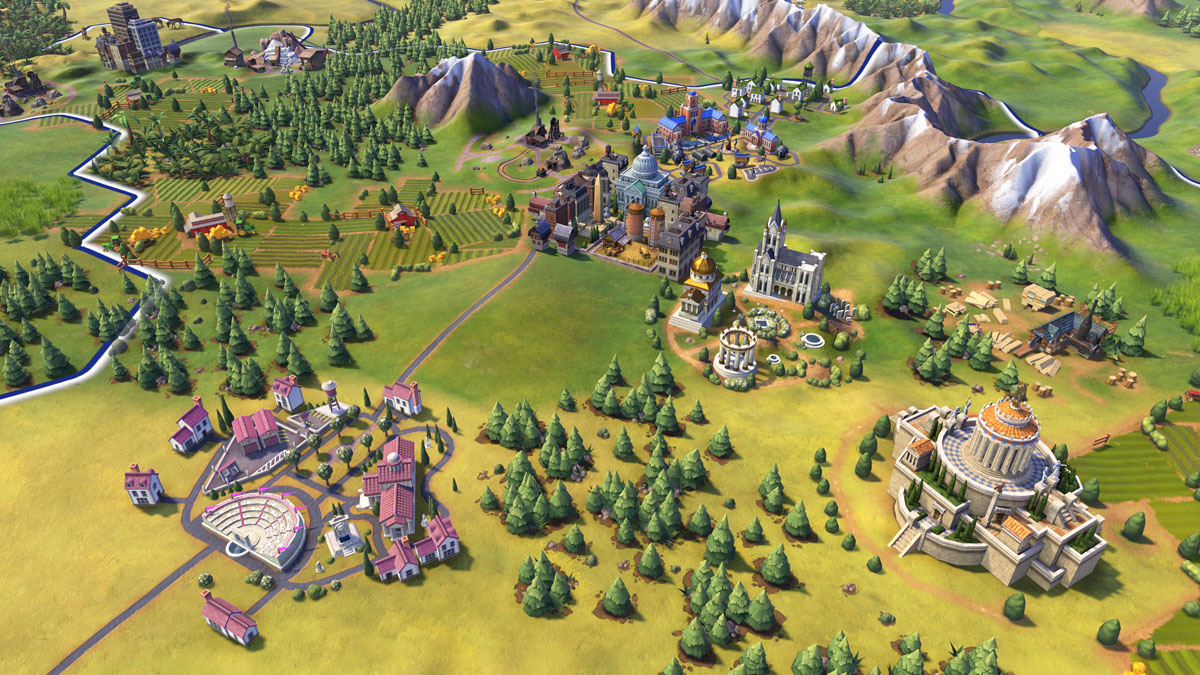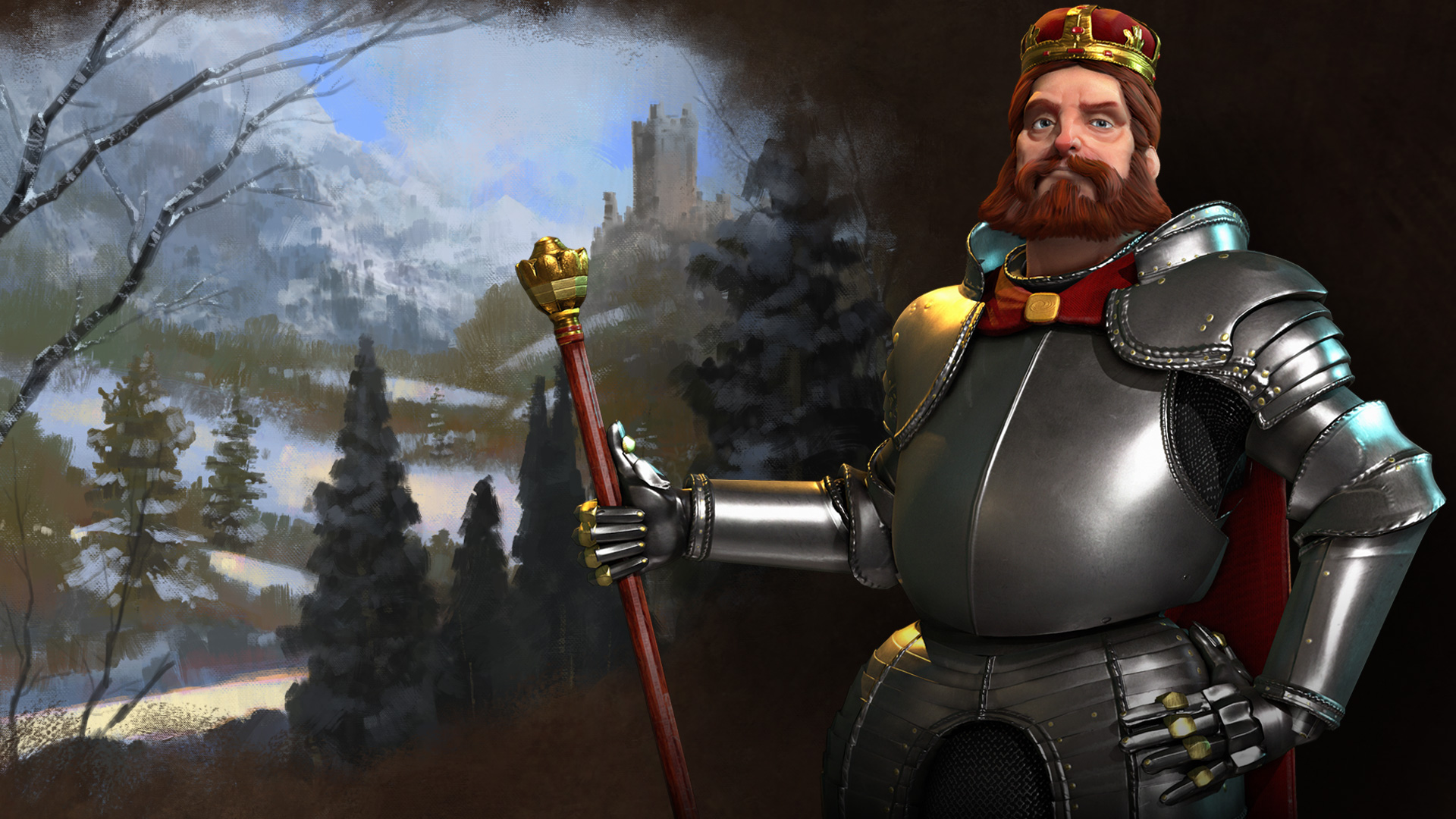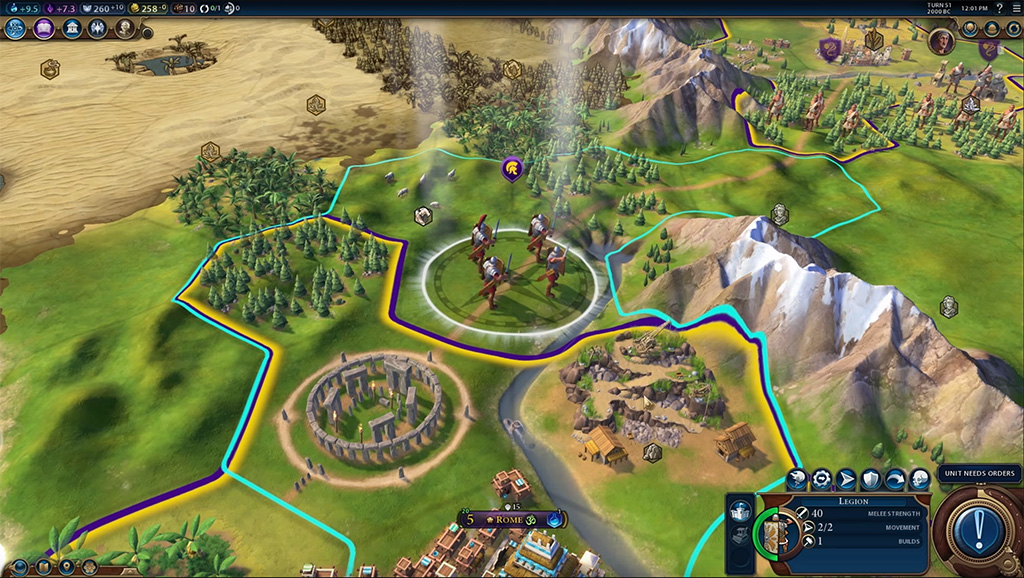
Over the last week, we've had unfettered access to a preview build of Civilization 6 that let us play games from beginning to end. We had 10 of the game's eventual 20 civs to choose from and were limited to Prince difficulty and certain map types and sizes, but we were able to experience the game itself otherwise unhampered. This gave us time to really dig into some of the big changes we've so far only seen briefly at preview events and in promo videos.
There are city districts, a culture-based "tech" tree, a religious victory, and more big changes that have a significant impact on the long-running series. Tom and T.J. have a logged a combined 50-plus hours in Civ 6 over the last week—forsaking their responsibilities and families for the sweet taste of "one more turn..." to find if these changes were good, bad, or just different for the sake of different.
Cities have districts and need to be planned out more carefully

Tom: There’s a whole lot more to consider when picking a spot to found a city in Civ 6. Districts have adjacency bonuses and tile requirements that need to be considered well before you ever plan on building them. For example, if you don’t have a flat hex adjacent to both your city center and a source of fresh water, you won’t ever be able to build an Aqueduct in that city, plain and simple. It adds an extra layer of depth to city planning beyond just checking what resources are nearby, and is something you can really only learn through trial and error.
T.J.: Which can be a little frustrating on your first couple starts, but I like that it makes it far more difficult to drill down to an optimal city layout. And once you get a bit more experience, you realize that you might have to make some sacrifices early on, like not building a holy site to have room for an effective industrial core in the later eras. In fact, having the district that grants bonus production unlock so late is definitely a game-changer for civ veterans, as “spam a lot of production buildings early” used to be one of, if not the, dominant strategy for all empires.
Tom: Yeah, the need to specialize certain cities—especially ones with limited housing, which caps your population—is really exciting. My capital still tended to become a super city that could do everything, but eventually I just ran out of tiles to build on and had to look to my other cities to fill certain roles. You can only rush so many wonders before you literally run out of land to build them on! At first I didn’t really get why Firaxis introduced districts, but it makes city planning a lot more challenging in the best possible way.
There are two ‘tech’ trees, and they are much more flexible

T.J.: I was kinda bewildered by how small Civ 6’s tech tree seemed at first, but then I realized a lot of stuff had been moved to the new civics tree. This creates some interesting cases where you can be ahead technologically but behind socially, or vice-versa, and helps make the science rush playstyle a bit less of a no-brainer.
Tom: As someone who usually goes for a cultural victory, I do love that those points are going to something beyond border expansion and civic bonuses in the early game, but it’s a little strange to me that they decided the answer was “another tree.” I like that culture is used for substantial unlocks, but I still enjoyed that the civics trees in Civ 5 had their own flavor to them. But I suppose sharing a common form allowed both trees to benefit from the new tech boosting “eureka” moments, which are one of my absolute favorite new features. They let you adapt to what’s actually happening in your game by directly rewarding you for it.
Keep up to date with the most important stories and the best deals, as picked by the PC Gamer team.
T.J.: It unlocks a totally new way to play the early game, if you so choose. Reading the tech and civics trees as mini quest logs and actively maximizing your progress through them can be a lot of fun if you’re not going for early war, and in past Civs might have just been sitting around waiting for buildings to finish. I likewise miss the different civics trees with their own themes—though a lot of that has been moved into the government types and policy cards, which are a bit more dynamic.
Religion has its own victory condition

T.J.: Religion was kind of an accessory added in the Gods & Kings expansion in Civ 5. It was a nice accessory, but it really played into other elements and victory conditions rather than being a game of its own. Civ 6 changes this by adding a victory condition for essentially converting the world to your religion, and introducing the somewhat hilarious “theological combat”, where competing missionaries can bombard each other with sky-born rays of truth and righteousness until one of them gives up and decides to go home. Something that never, ever happens in internet debates, but can happen in Civ 6.
Tom: I like that religion has a victory condition, but the whole system currently feels like one of those things that is waiting to be “fixed” in an expansion. I don’t know about you, but I found the theological combat to be extremely one-dimensional and dull, especially when the AI decides to start massing religious units to storm your empire. It’s almost exactly what was wrong with Civ 4’s unit stacking that Civ 5 tried to fix and Civ 6 has expanded upon. Civ 6’s actual combat has increased nuance through the new support units and combining units into Corps and Armies, while spreading and defending your religion is just “spam a bunch of dudes and walk towards your opponent.”
Each AI leader has unique agendas

T.J.: The reason I love this change is that it shows a recognition that singleplayer and multiplayer in a strategy game are different beasts. If you try to make AI leaders behave like a human opponent, it’s just never going to work. Agendas give the AI leaders goals that are varied, interesting, comprehensible, and discoverable (in the case of the hidden ones). They’re much more fun to play against because they’re not trying to play like people. They’re crafted to be interesting opponents to a human player.
Tom: I totally agree. It makes the sometimes obtuse behavior of each AI leader a lot clearer. You can specifically see what will make someone happy or mad, and then watch as they don’t like you anyway because the AI is the meanest and I hate them. Seriously, does any leader on the same continent as me ever just want to be buds?
T.J.: I’m also astonished how overlooked the introduction of cassus belli (needing a reason to go to war) has been in Civ 6. Going to war without justification greatly increases your warmonger penalty, so the AI leaders further act as a check on naked aggression that can be mitigated with civics that unlock religious, colonial, or territorial wars. Denouncing an opponent and waiting five turns waives this requirement, but gives them a decent heads up that war may be coming. It also decreases the incidence of surprise wars the AI declares against you in the early game.
Tom: I like that you can also finally make the same demands your AI opponents would make of you (don’t settle near me, move your troops, etc.) to them, and then hold them to those demands. In general, AI leaders don’t seem too much smarter than previous games—at least on Prince difficulty—but they are significantly more understandable in how they react to you and how you can influence them.
Movement is slower, but roads are easier to lay down.

Tom: As I explained in my preview video last month, unit movement doesn’t “round up” anymore and scouts can no longer waltz through rough terrain. I’m pretty torn on this change. I may just need to get used to it more, but the limited movement feels a lot more frustrating to deal with in the early game. Everything is (predictably) slower, and trying to move an army through a thick jungle can be downright infuriating.
T.J.: A lot of people have been seeing this as a general nerf to military units, but I like to view it rather as a buff to specialized units. If you have a unique unit that ignores certain terrain-based movement penalties, like Kongo’s, that’s a pretty huge deal now, and completely changes how you conduct war as or against that civ. It also gives more of a combat role to scouts who have earned the Alpine and Ranger promotions, whereas in Civ 5, they were mostly just used for exploration. In addition, the fact that roads auto-build along trade routes opens up some interesting choices. Do I want to trade with the civ I eventually plan to conquer and give them resources, in exchange for an easy highway to attack them with?
Tom: Sending a trade route to a nearby opponent before declaring war is the dirtiest tactic, and boy do I love it to death. I really like not having to use workers to lay down roads (especially considering workers are now expendable builders) and worry if the maintenance cost of my highways will one day sink my empire. And the movement change does make those roads more important to get down when you can, but I’m just grumpy and impatient. I’ll get it over it I suppose...


